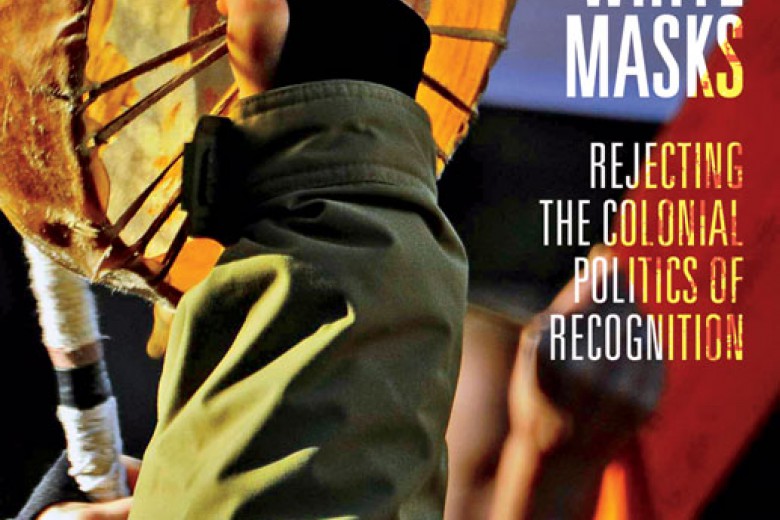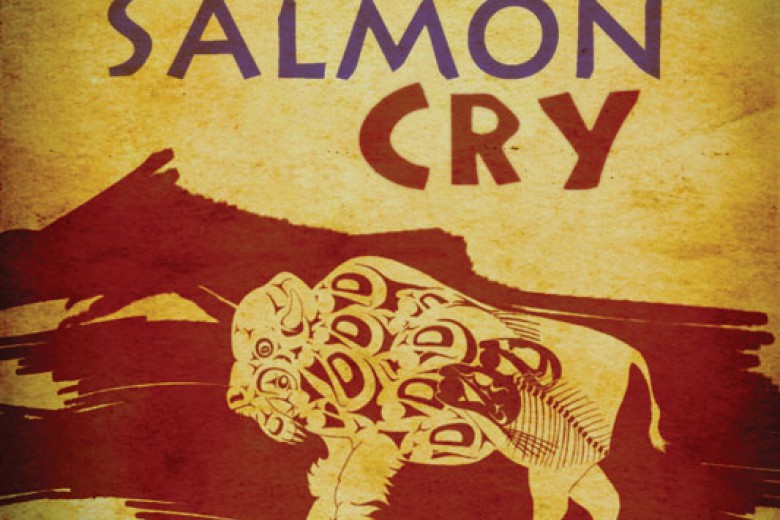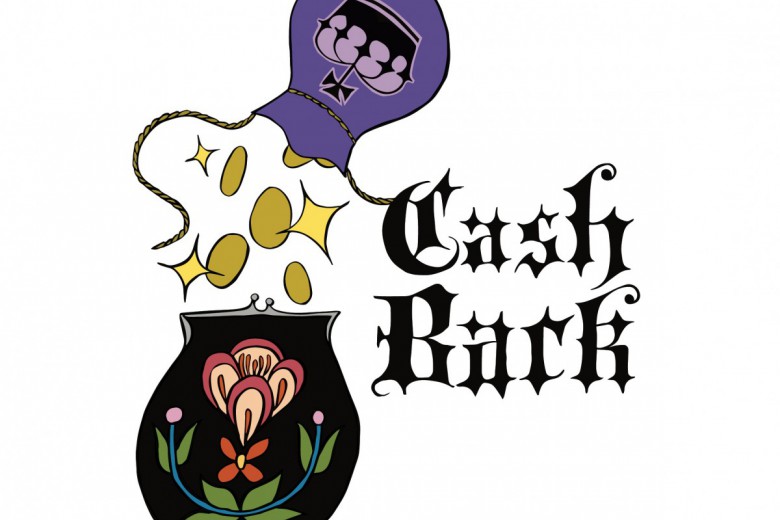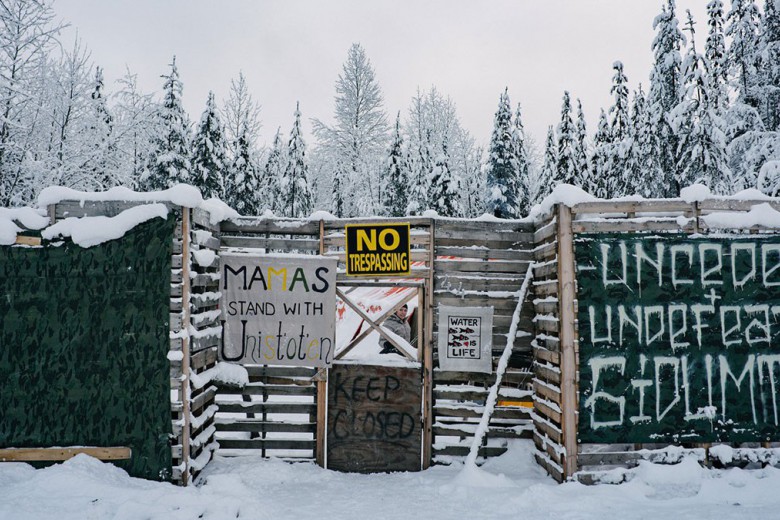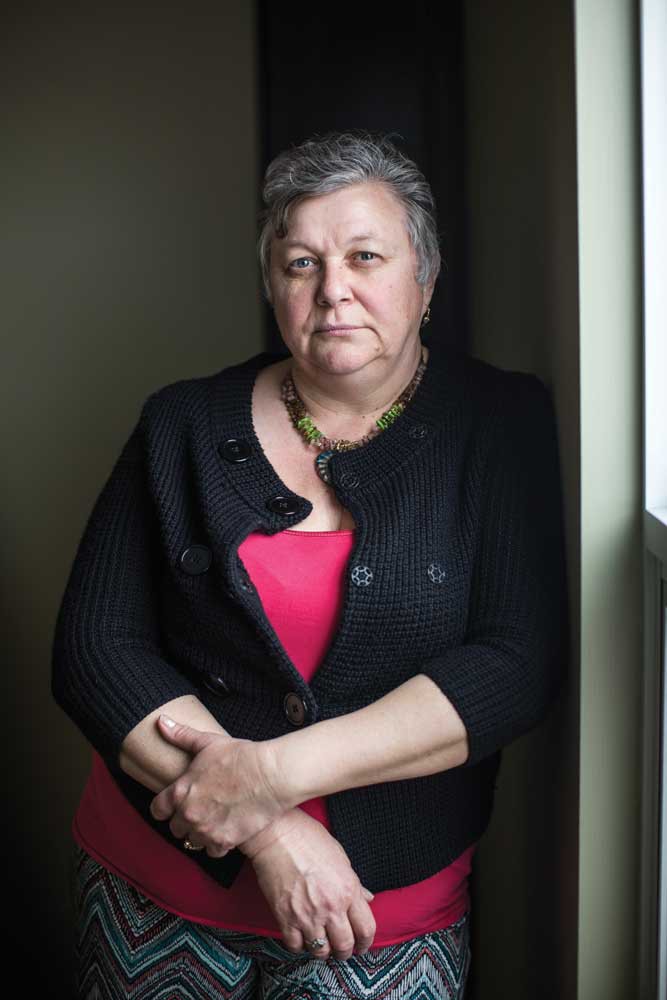
I’m standing there for less than a minute when Terrylynn Brant tells me to grab a chair. I pull one from the neat stacks in the hallway and linger uncertainly.
“Join our circle,” she says. It’s more of a horseshoe shape at present – only five women are there before I settle in.
I’m passed a long sheet of paper to hold: a photocopy of a statement from the Haudenosaunee Confederacy Chiefs Council on the alcohol referendum. This is why we’re here this Saturday morning instead of sleeping in or running errands or, in my case, binge-watching the TV show The Mindy Project. This is the latest skirmish on Canada’s largest reserve in a decades-long struggle between the original Haudenosaunee Confederacy Chiefs Council (HCCC) and the Canada-backed and imposed Six Nations Elected Council (SNEC).
In November 2014, the SNEC received an offer from IPA Enterprises Inc. to build an alcohol brewery in the Oneida Business Park, promising 90 per cent ownership, $2.2-4 million in revenue, and 145 jobs in the first couple years. Since economic prospects on Six Nations are slim – in 2009, the unemployment rate on-reserve was three times that of Ontario – the brewery seems like a good option. But our peoples have a fraught relationship with alcohol and before there can even be a brewery on Six Nations, there are some legalities to sort out.
When the Indian Act officially lifted the ban on on-reserve alcohol sales in 1985, it left a gap in legislation. In 1988, the SNEC tried to hold a referendum on whether to allow alcohol sales or restrict them,but the issue proved so contentious that they cancelled the referendum altogether, passing a band council resolution that no council would ever bring up the issue again.
Yet here we are: in a small but fierce circle in the atrium outside the Six Nations Community Hall, watching other community members cast their ballots. The women here won’t be doing that, though they do feel very strongly about keeping alcohol sales outside of the community.
“If I vote, and I participate, and one kid dies, I’d feel guilty about that,” says Brant. Indeed, the odds aren’t exactly in our peoples’ favour: alcohol-related deaths are six times more likely for First Nations peoples than for our non-Native peers.
The HCCC agrees with Brant. Their statement reads: “After careful reflection and consideration of the damaging effects that alcohol has had on our people and continues to have … the Haudenosaunee Confederacy Chiefs Council does not support the manufacturing or retailing of alcohol or drugs and are opposed to any effort to bring danger into our Territory.”
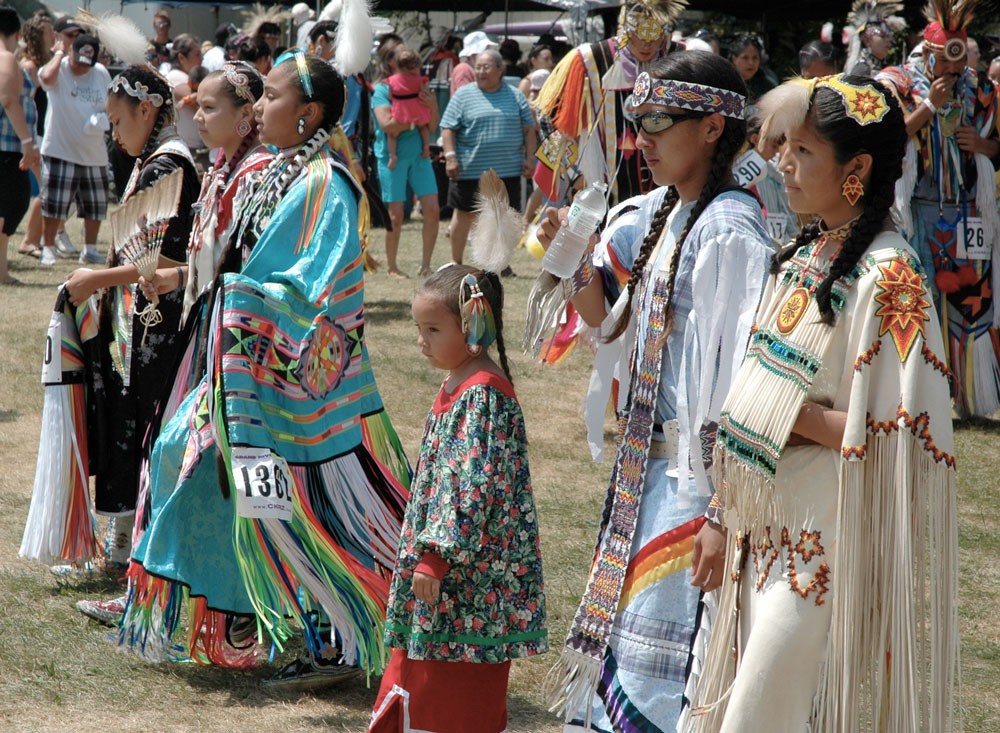
Since the referendum was announced, passionate letters have splashed across the editorial pages of local newspapers.
There’s no shortage of strong opinions. But faith in the electoral system – that’s another matter. Brant is representing what she has dubbed “the silent majority”: the more than 18,000 eligible community members who refuse to take part in the elected council system. This silent majority is currently in a bind: if they don’t vote, the future of their community is out of their hands. If they do vote, they’re supporting the paternalistic, colonial system that has negatively shaped their lives since contact.
This is hardly the first time Six Nations – the most populous reserve in Canada – has had a problem with their elected politicians. The most recent Six Nations band council election, in November 2013, had a turnout of only 1,057 voters out of an eligible 20,520. That’s an appalling five per cent voter turnout – and the current chief, Ava Hill, won by a mere two votes. Although these leaders are technically democratically elected, to call government based on such a small turnout “representative” is more than a stretch – it’s a lie.
But as Hazel Hill, director of the Haudenosaunee Development Institute (HDI), points out, that has never been the Canadian government’s concern.
“They don’t care about the treaties. They don’t care that the band council is a minority government,” says Hill. “They don’t look at how their system relates to our system and the impact it’s had.”
Of all the social divisions in Six Nations (lacrosse teams, powwow decisions, who has the best corn soup recipe), the biggest, most heated split is courtesy of Canada and the Indian Act, and it remains entrenched: the division between the Six Nations Elected Council and the HCCC.
Dawn of the elected council
The tale of the elected council coming to Six Nations is as sordid as a classic gangster film, all betrayals and broken allegiances. Despite numerous treaties and promises, the government of Canada refused to stop non-Native squatters from squirrelling away our land base and prevented us from accessing funds supposedly “held in trust” for our people. Eventually, the Confederacy’s patience wore through. In 1923 they sent Cayuga Chief Deskaheh, or Levi General, to the newly formed League of Nations to plead for the Haudenosaunee’s right to be considered a sovereign nation.
Angry at the negative international light Deskaheh’s efforts were shining on Canada, the head of Indian Affairs, Duncan Campbell Scott, ordered an investigation into Six Nations, looking for anything that would discredit Deskaheh and allow Canada to install its own government. A vocal minority of Six Nations “Loyalists” were eager for this to happen, asking Canada to bring in an elected council. Aided by the findings of Scott’s questionable investigation and the pleas of these “Loyalists,” the Canadian government passed a royal proclamation “dissolving” the Confederacy on October 7, 1924. The RCMP promptly descended on the council house, occupying the premises and preventing the Confederacy from entering. Six Nations was officially a “democracy” – which is ironic, since the HCCC had influenced that most celebrated and foundational of documents for modern democracy, the American Constitution.
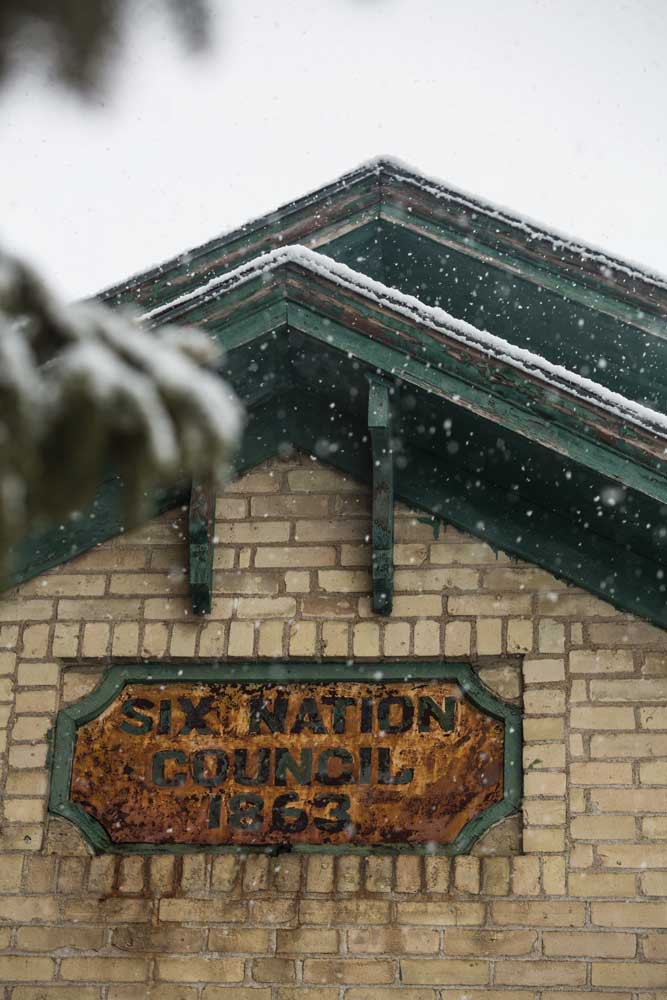
The imposition of the elected council wasn’t exactly welcomed by Six Nations people. Eight hundred adults swiftly signed a resolution opposing Canada’s actions. There was such resistance, the American lawyer and Indigenous ally George Decker reported, that while the election was only for 12 band councillors, “It turned out that 12 Six Nations men willing to serve could not be found … without including several Six Nation [men] in the employ of the Canadian government.” Apparently Canada had not fully thought through its coup.
Not that it mattered. The first election of the “Mountie’s council” was based on 56 ballots, which Chief David Hill Sr. claimed were simply the result of a mere 26 people voting multiple times. In a twist fit for a soap opera, one of the band councillors elected was none other than David General, Deskaheh’s own brother. The Six Nations Elected Council’s first act was to swear allegiance to the King. This was followed quickly with a resolution deeming all money raised for Deskaheh and his League of Nations claim “illegally obtained.”
Ever since that fateful day in 1924 when Canadian “democracy” arrived, there has been palpable tension between the elected council and the Confederacy council, which didn’t buckle under the authority of a piece of paper and refused to dissolve. There was even a court case in 1973 to determine the rightful leaders of Six Nations (Isaac et al. v. Davey et al.). Ontario Justice John Harty Osler ruled in favour of the Confederacy, saying “the Council of Hereditary Chiefs have by far the better claim to the management of the premises in question” while the band council’s “representative character is … seriously in doubt.” But the ruling was overturned on appeal, leaving things on Six Nations unchanged.
SIX NATIONSUntil recently, the Haudenosaunee or “people of the longhouse” were referred to as the Iroquois by Canadian and American settlers. The Haudenosaunee Confederacy, said to have existed since time immemorial, includes six nations: the Seneca, Cayuga (Gayogohó:no’), Oneida, Onondaga, Mohawk (Kanien’kehá:ka), and Tuscarora (who joined the original five nations in the 18th century).
Prior to contact, the Haudenosaunee were horticulturalists who lived year-round in stockaded villages. The basic social unit was matrilineal where several matrilineages combined to form a clan.
Six Nations is the largest First Nations band in Canada with more than 25,000 members.
The reserve is located near Brantford, ON, about 25 km southwest of Hamilton.
According to the band council website, there are 18 churches and approximately 300 businesses on the reserve.
An estimated 20 per cent of the on-reserve population is employed in the Six Nations tobacco industry.
The acreage of the Six Nations Reserve is roughly five per cent of the original 950,000 acres of land granted in the 1784 Haldimand Treaty.
Many believe that the participatory, democratic model of the Haudenosaunee Confederacy’s constitution directly influenced the drafters of the American Constitution.
Contested authority
The SNEC and HCCC have rarely, if ever, seen eye-to-eye. This is a frustrating reality for current SNEC Chief Ava Hill, whose election campaign was built around bridging this divide and uniting the community.
“I think there’s a role for both of us and I think we need to sit down and figure out what that is,” she says. “I’ve sent [the HCCC] a letter asking to meet with me and they’ve refused.”
That has not stopped Chief Hill from pressing ahead. She has lobbied local, provincial, and federal governments over everything from land claims to education reform to legislation targeting the Six Nations tobacco industry. Though the effects haven’t been substantial, the fact that these steps could be taken at all shows how far we’ve come from the complicit puppet council of 1924. One can hardly imagine a councillor like David General, who voted against aiding his own brother, lobbying against the Canadian government’s racist legislation.
Still, the historical ties between the Canadian government and the Six Nations Elected Council continue to taint the way the SNEC is seen by the people.
Brant, for example, calls it “a master/servant, father/son relationship. It is not a relationship of equals,” she says. “We’ll always be thought of as having to get permission or having to abide by someone else’s rules.”
Considering the recent controversy over the First Nations Financial Transparency Act (FNFTA), whereby band councils are legally obligated to make not only their salaries but also all other band-related income public to all Canadians, that seems like a pretty good estimation. In a bullying tactic, the Canadian government has withheld funding for nearly 50 bands that have not complied with this legislation. Bands like Barriere Lake have claimed they cannot comply, as they haven’t had access to funds or records since the government imposed third-party management three years ago. As if withholding funding weren’t enough, Canada is officially suing six bands that have refused to comply with the FNFTA.
Six Nations gives much, much more than it receives, says Chief Hill. While the elected council has faced continued cuts to its combined $44 million provincial and federal budget, Grand River Enterprises, a licensed tobacco company on Six Nations, pays over $160 million in excise taxes per year to the Canadian government. (Tell me again that Indians don’t pay taxes.)
Though the SNEC has complied with the FNFTA, the Canadian government’s actions against non-compliant bands are a troubling reminder of who holds the real power in this scenario, calling to mind how Sir John A. Macdonald starved Indians on the Plains to force western expansion. The recent tactics don’t surprise Chief Hill.
“They’ll always threaten us with our funding,” she says. “‘If you don’t do this by such and such a day, then we’ll cut your funding.’ That’s what they’re doing with these [other] bands.”
Though Chief Hill has described repealing the Indian Act as an “eventual goal,” it’s hard to imagine such a drastic change could ever be implemented by a band council whose sole source of empowerment and authority is the Indian Act itself and the system it represents. The HDI’s Hazel Hill puts it another way: “They’re bought. They’re bought and paid for.”
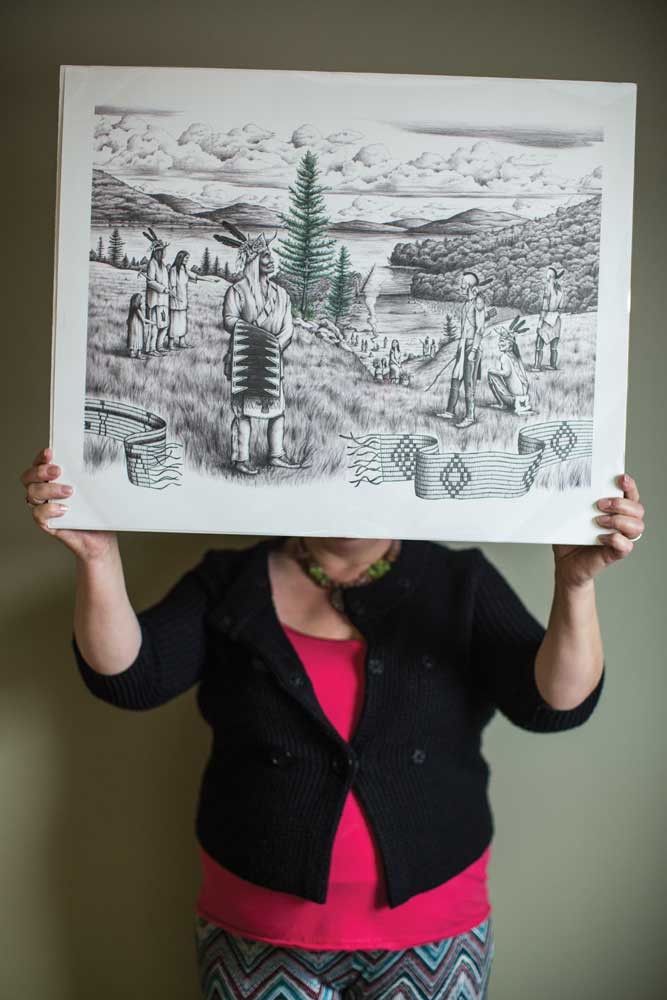
The HDI was formed by the HCCC in 2007, in response to the 2006 reclamation of Kanonhstaton (Douglas Creek Estates) and the ensuing land negotiations. Since then, they’ve represented the HCCC on all land development issues, ensuring that all development in the area is done with “perpetual care and maintenance” and with respect to Haudenosaunee interests.
“I like to say HDI is the new Joseph Brant,” Hill jokes.
Still, even with this strong showing of sovereignty by the HCCC, Hill acknowledges that Canada’s refusal to recognize the HCCC continues to impact our people. She cites instances when even HCCC supporters have sought band council resolutions to support their work in the community.
This isn’t uncommon. Every Six Nations youth group I worked with in high school made presentations to both the HCCC and the SNEC. Why would people who didn’t back these councillors ask for their support? Because along with Canada’s paternalistic, conditional recognition comes badly needed funding, which only the band council can administer.
Those days may be coming to an end, though. Hill says that the HCCC has successfully negotiated over a million dollars a year in energy projects, with plans to put resources back into revitalizing language and ceremonies.
“Our people need to wake up and understand that just because Canada is comfortable with the band council, and just because Indian Affairs has created this little system that it can control, does not mean we need that system to go out and get things done.”
The women who are sitting in the community hall silently expressing their opposition to the alcohol referendum know this, as did the women who started the reclamation that changed everything for Six Nations back in 2006.
Even the government of Canada knows this. In their 2010 report on First Nations elections, the Standing Senate Committee on Aboriginal Peoples concluded, “Modifying a [band council] system whose legitimacy is so fundamentally in question does little to begin the real work of reconciliation. We find that implementing lasting change […] must begin and end with First Nations themselves.” This report is evidence, however faint, that there are some within the Canadian government to whom “reconciliation” isn’t merely a buzzword bandied about during elections, but an actual goal.
When I ask Hazel Hill what Canada can do, if anything, to repair its relationship with Six Nations, she offers no easy solutions and she does not hesitate.
“That’s the one question Canada has to ask itself.”
At the end of the day, the results from the referendum come back. With a total of 557 ballots cast, comprising approximately 3.1 per cent of eligible voters, the people have decided to keep things the same: no regulation, no brewery. It’s a rare occasion when the silent majority and the vocal minority – both HCCC supporters and SNEC supporters – are actually in consensus.
While that uneasy truce may not last, this much is certain: the Indian Act may define who Canada considers an “Indian” or deems an official government, but it will never define what we as Indigenous peoples can accomplish.


